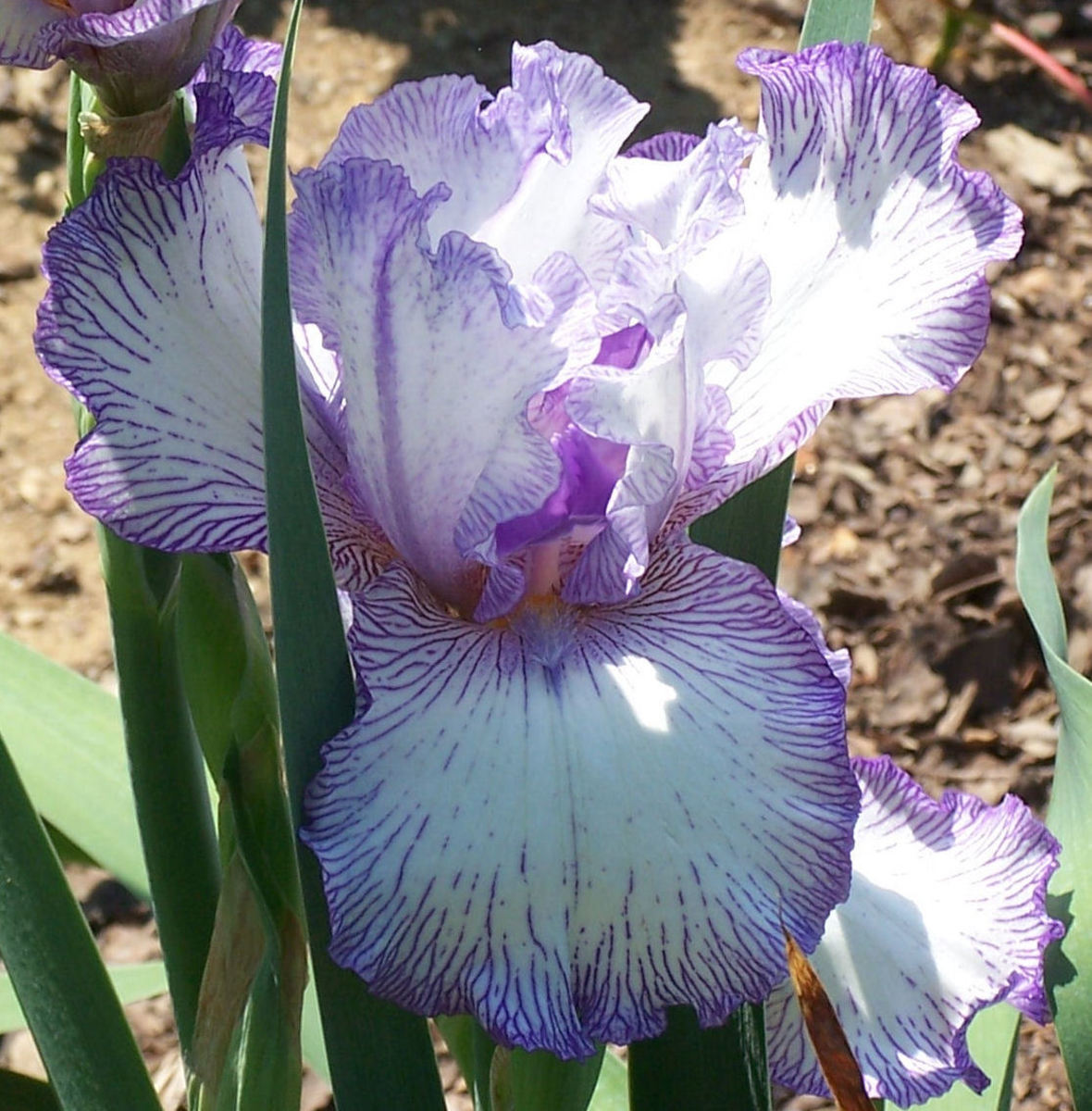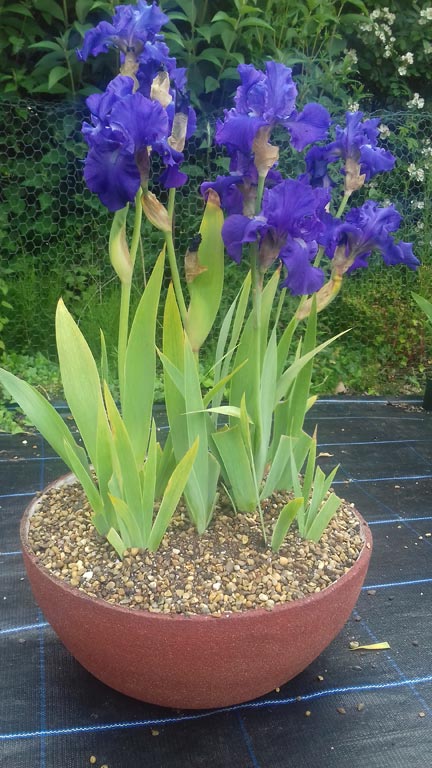Choosing the Right Spot for Maximum Beauty
Selecting the right location is crucial for optimal growth and blooming of bearded iris plants. To ensure these beautiful flowers thrive, it’s essential to consider key factors such as sunlight, soil, and water requirements. Understanding where to plant bearded iris is vital, as it can significantly impact the health and beauty of your plants. By choosing a location that meets the specific needs of bearded iris, you can enjoy vibrant blooms and a thriving garden.
How to Select a Location with Ideal Sunlight Conditions
Bearded iris plants require a significant amount of direct sunlight to thrive, typically between 6 to 8 hours of direct sunlight per day. When deciding where to plant bearded iris, it’s essential to assess the sunlight conditions in your garden. Observe the area at different times of the day to determine the amount of direct sunlight it receives. South-facing locations often receive the most direct sunlight, making them ideal for bearded iris. However, if your garden receives full sun for more than 8 hours, consider providing some afternoon shade to prevent scorching. By selecting a location with ideal sunlight conditions, you can promote healthy growth and vibrant blooms.
Soil Considerations for Healthy Bearded Iris Growth
When deciding where to plant bearded iris, it’s crucial to consider the soil requirements. Bearded iris plants thrive in well-draining soil with a slightly acidic to neutral pH level, ranging from 6.0 to 7.0. The soil should be rich in organic matter, such as compost or humus, to provide essential nutrients. Avoid planting in areas with heavy clay or sandy soils, as they can cause waterlogging or drought. To prepare the soil for planting, mix in a 2-inch layer of compost or well-rotted manure to improve drainage and fertility. Additionally, remove any debris, rocks, or weeds that may compete with the bearded iris for water and nutrients. By selecting a location with suitable soil conditions, you can promote healthy growth and blooming.
Watering and Drainage Essentials for Bearded Iris
Bearded iris plants require consistent moisture, especially during the growing season. However, it’s crucial to avoid overwatering, which can lead to root rot and other problems. When deciding where to plant bearded iris, ensure the location has good drainage to prevent waterlogged soil. Check the soil’s drainage by digging a small hole and filling it with water. If the water drains quickly, the soil is suitable for bearded iris. If not, consider raised beds or mounds to improve drainage. Water bearded iris plants deeply once or twice a week, depending on weather conditions. Avoid getting water on the leaves or flowers to prevent fungal diseases. Mulching around the plants can help retain moisture and reduce evaporation. By providing the right amount of water and ensuring good drainage, you can promote healthy growth and blooming.
Considering Wind Direction and Protection
When deciding where to plant bearded iris, it’s essential to consider the wind direction and protection. Strong winds can cause damage to the plants, especially the tall varieties, and reduce blooming. Look for a location that provides some shelter from strong winds, such as behind a wall, fence, or group of trees. If you can’t find a naturally sheltered spot, consider creating a windbreak using burlap, snow fencing, or other materials. Additionally, provide support for the plants using stakes or trellises to prevent them from toppling over in the wind. By considering wind direction and protection, you can ensure your bearded iris plants remain healthy and thrive. For example, if you live in a coastal area with strong sea breezes, consider planting bearded iris in a location that is protected from the wind, such as a courtyard or a spot behind a building. By taking wind direction and protection into account, you can create an ideal location for your bearded iris plants to bloom beautifully.
Planting Bearded Iris in Containers or Beds
When deciding where to plant bearded iris, consider whether to use containers or beds. Both options have their benefits and drawbacks. Planting bearded iris in containers allows for greater flexibility and control over soil conditions, making it ideal for small gardens or balconies. Containers also make it easier to move the plants to different locations to optimize sunlight and wind protection. However, containers may require more frequent watering and fertilization. On the other hand, planting bearded iris in beds provides a more naturalized look and can be a cost-effective option. Beds also allow for better soil drainage and aeration, which can promote healthy root growth. However, beds may require more maintenance, such as weeding and mulching. Ultimately, the choice between containers and beds depends on your personal preference, garden size, and maintenance capabilities. By considering these factors, you can decide where to plant bearded iris to achieve optimal growth and blooming.
Creating a Beautiful Bearded Iris Border
When it comes to creating a stunning bearded iris border, the key is to combine different varieties and colors in a way that showcases their unique beauty. By selecting a mix of irises with varying bloom times, heights, and colors, you can create a dynamic and visually appealing display that will attract attention and admiration. To get started, consider the following tips for designing a beautiful bearded iris border:
First, choose a location that receives the right amount of sunlight for your bearded irises, as they require at least six hours of direct sunlight per day. When selecting varieties, consider a mix of tall, medium, and short irises to create a layered effect. You can also combine different colors, such as purple, pink, yellow, and white, to add visual interest. For a cohesive look, choose irises with similar bloom times, such as early, mid-season, or late-blooming varieties.
When planting, space your bearded irises about 12-18 inches apart, depending on the variety. This will give them room to grow and spread out, while also allowing for good air circulation. Consider planting them in a triangular formation, with the tallest irises in the back and the shortest in the front. This will create a sense of depth and visual interest.
To add some extra flair to your border, consider incorporating other plants that complement the bearded irises. Low-growing groundcovers, such as creeping thyme or sedum, can help to fill in gaps and add texture. You can also add some ornamental grasses or perennials, such as coneflowers or black-eyed susans, to add height and color.
Finally, don’t forget to consider the overall shape and flow of your border. A curved or winding border can add visual interest and create a sense of movement. You can also use a focal point, such as a large stone or statue, to draw the eye to a particular area of the border.
By following these tips, you can create a beautiful bearded iris border that will be the envy of your neighbors. Remember to choose the right location, select a mix of varieties and colors, and consider the overall design and flow of your border. With a little planning and creativity, you can create a stunning display of bearded irises that will bloom beautifully for years to come. Where to plant bearded iris is crucial, and by selecting the right location, you can ensure optimal growth and blooming.
Tips for Planting Bearded Iris in Different Regions
When it comes to planting bearded iris, it’s essential to consider the specific climate and soil conditions of your region. Different regions have unique challenges and requirements, and understanding these factors can help you choose the right varieties and provide optimal care for your bearded iris plants. Here are some region-specific tips and considerations to keep in mind:
In hot and dry climates, such as the Southwest, bearded iris plants may require more frequent watering and protection from intense sunlight. Look for varieties that are drought-tolerant and provide shade for your plants during the hottest part of the day. In cooler and wetter climates, such as the Pacific Northwest, bearded iris plants may require more drainage and air circulation to prevent root rot.
In regions with heavy clay soils, such as the Midwest, bearded iris plants may require more careful soil preparation to ensure good drainage. Add organic matter like compost or well-rotted manure to improve soil structure and fertility. In regions with sandy soils, such as Florida, bearded iris plants may require more frequent watering and fertilization to ensure optimal growth.
In areas with high winds, such as coastal regions, bearded iris plants may require staking or other support to prevent damage. Choose varieties with sturdy stems and provide shelter from strong winds. In areas with extreme temperatures, such as the Northeast, bearded iris plants may require more protection from frost and cold temperatures. Mulch around the base of your plants and provide a layer of straw or burlap to protect them from harsh winter conditions.
Where to plant bearded iris is also crucial in different regions. In areas with high humidity, such as the Southeast, bearded iris plants may be more susceptible to disease. Choose varieties that are resistant to disease and provide good air circulation to prevent moisture from accumulating around the plants. In areas with low humidity, such as the Rocky Mountains, bearded iris plants may require more frequent watering to ensure optimal growth.
By understanding the specific challenges and requirements of your region, you can provide optimal care for your bearded iris plants and enjoy beautiful blooms for years to come. Remember to choose the right varieties, prepare the soil carefully, and provide the right amount of water and sunlight for your plants. With a little planning and creativity, you can create a stunning display of bearded iris that will thrive in your region.







